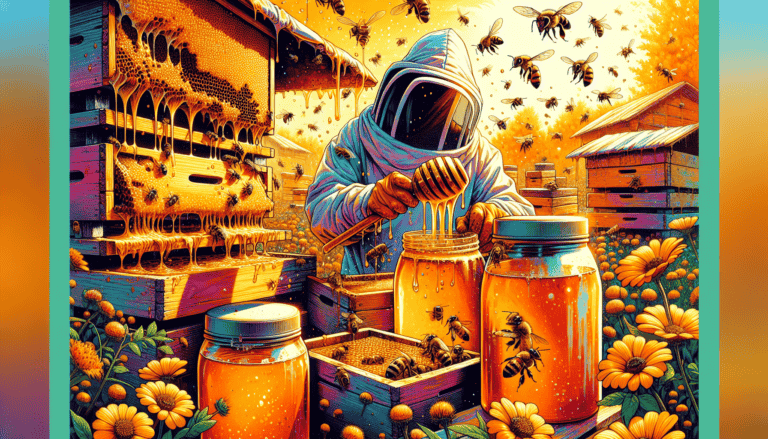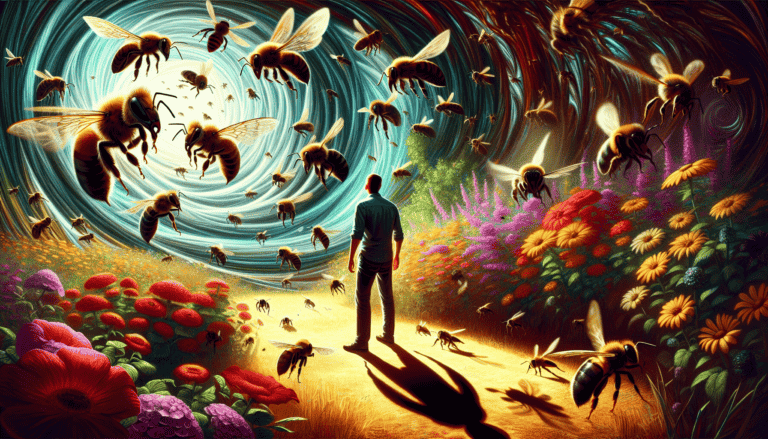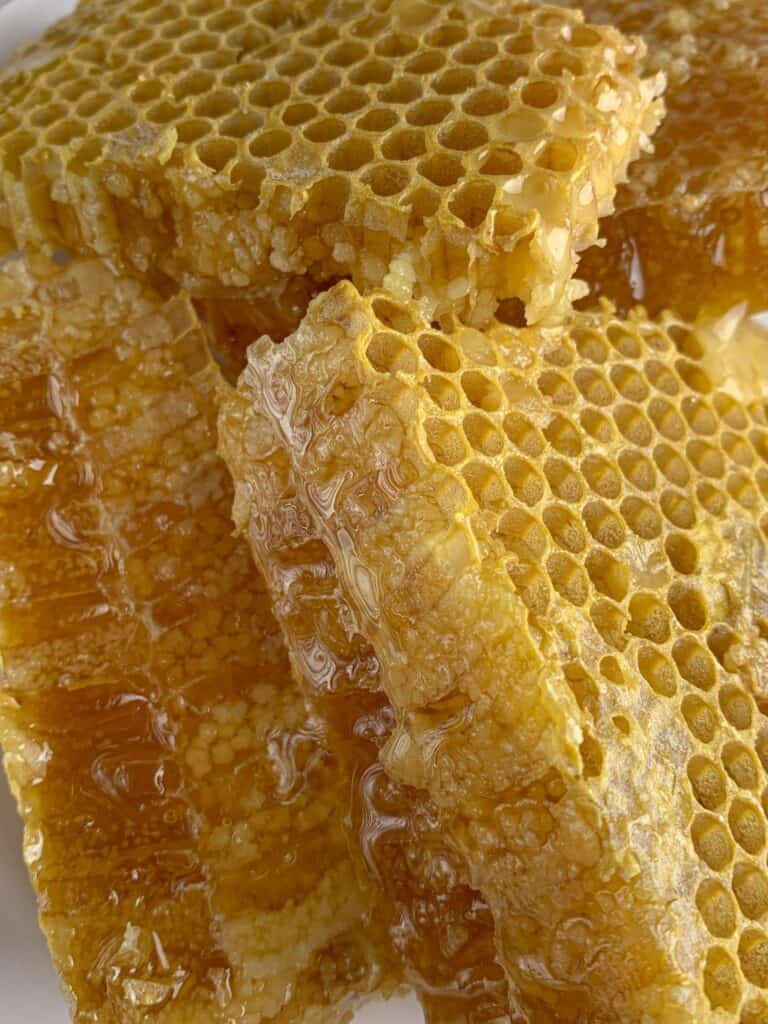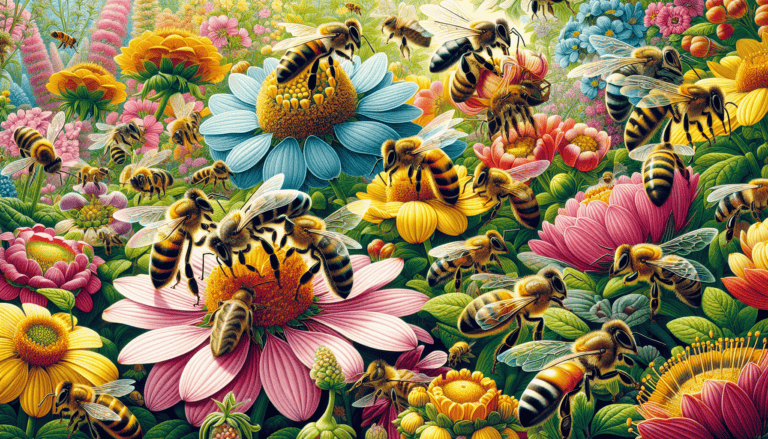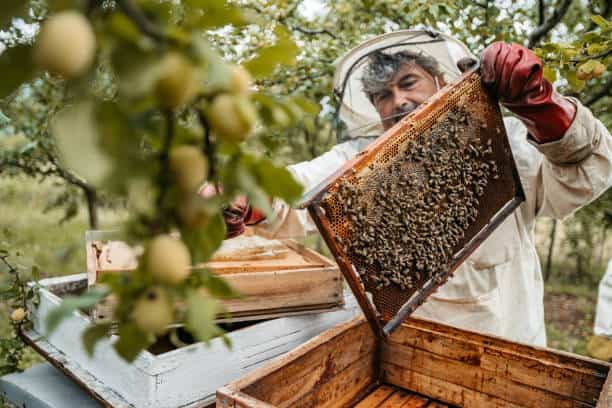Best Practices for How to Feed Bees and Boost Hive Health
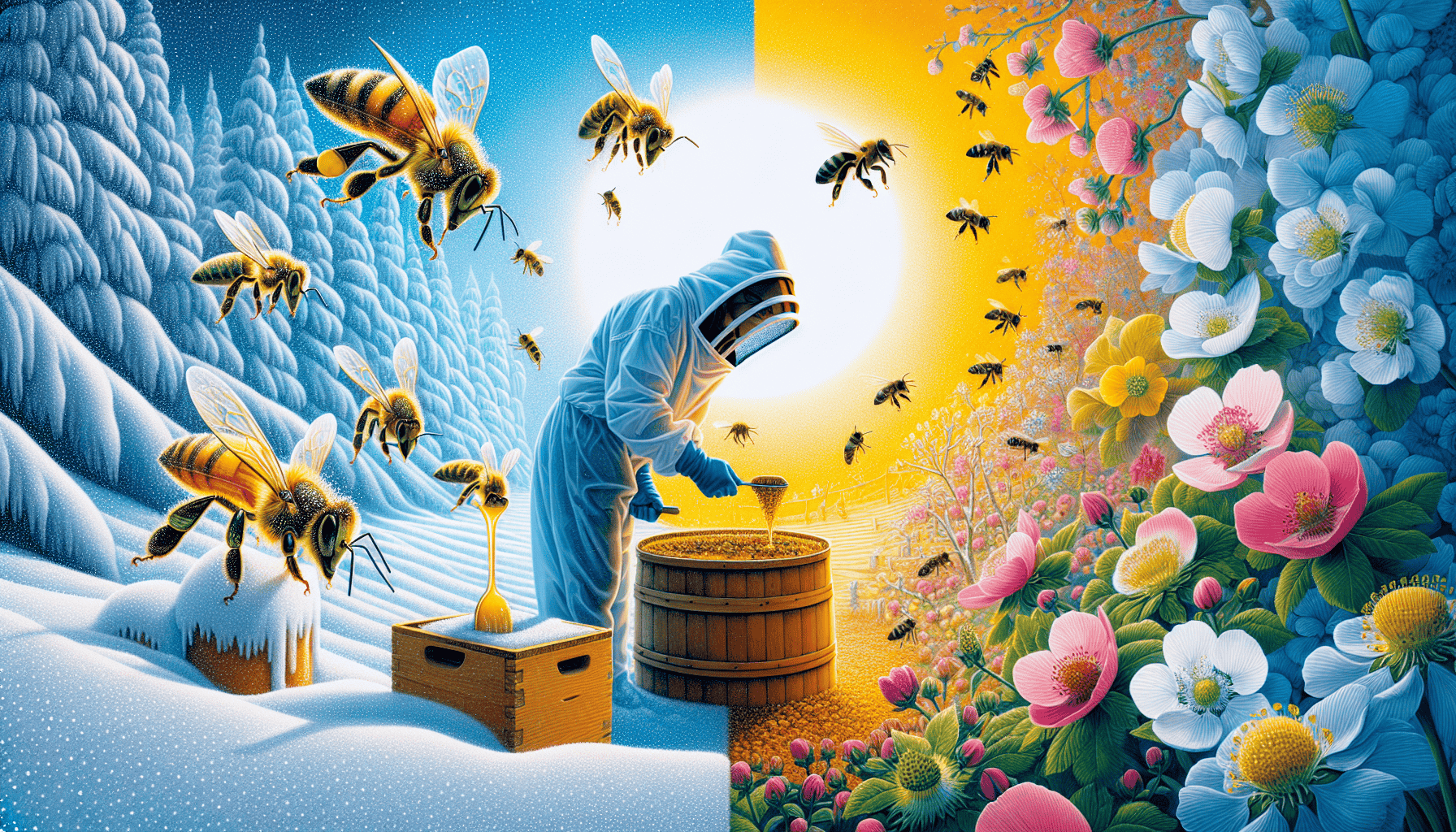
Properly feeding bees is crucial for their survival and the wellbeing of the hive, especially in periods when resources are scarce. In this article, we will provide instructions on how to feed bees effectively by discussing optimal feed choices, methods of feeding, and seasonal tactics designed to ensure your colony flourishes.
Key Takeaways
Honey bees require a balanced diet of carbohydrates and proteins, with feeding methods such as sugar syrup, dry sugar, and pollen patties critical for their health.
Seasonal feeding strategies are essential; adjust feeding practices in winter, spring, and fall to ensure honey bees have sufficient reserves and support brood development.
Monitoring hive weight and bee behavior is vital for adjusting feeding practices, preventing overfeeding and disease, and ensuring the overall health of the honey bee colony.
Choosing the Right Feed for Honey Bees
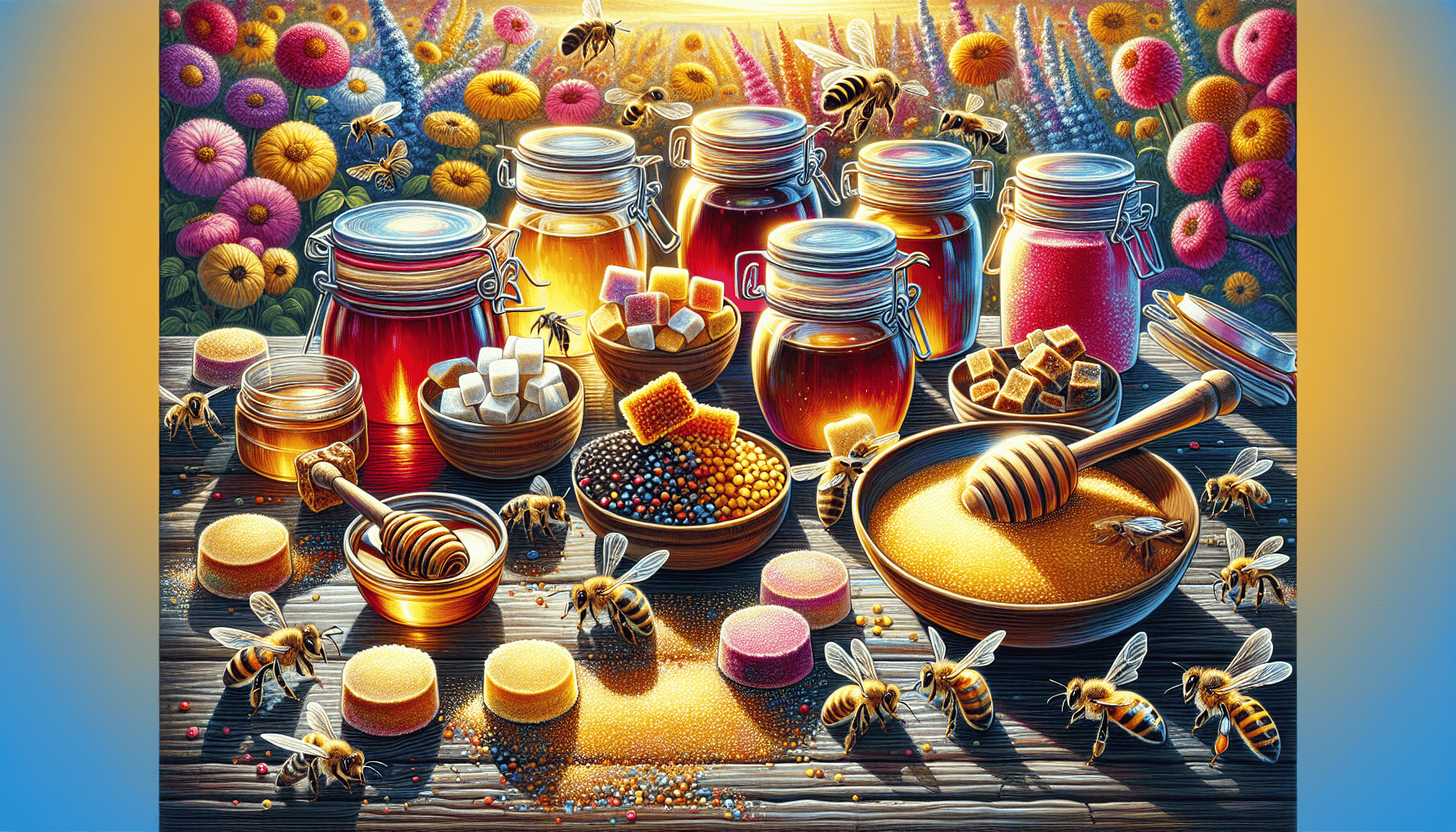
Ensuring that honey bees receive a suitable diet is essential for their health and effectiveness. These bees rely heavily on carbohydrates from nectar or honey, along with proteins derived from pollen. They require not only these but also a mix of lipids, vitamins, minerals, and water to maintain a balanced nutritional profile. Within the hive itself, bees store honey as their main source of sustenance. External sources of feed can play a crucial role during periods when natural food supplies are low.
To support feeding honey bees, there exists an array of recommended sugar-based supplements including options like sugar syrup, dry sugar and pollen patties—each offering distinct advantages dependent on environmental circumstances and seasonal timing. Below we detail the characteristics unique to each variety of supplemental feed.
Sugar Syrup Preparation
One of the primary forms of sustenance provided to honey bees is sugar syrup. The usual mix for creating this syrup involves blending either one part water with one part sugar or a two-to-one ratio of sugar to water, respectively. To prepare, combine lukary white table sugarm water and agitate until the granulated white sugar fully dissolves. It’s important not to use brown sugar, molasses, or unrefined sugars since these may be detrimental to bee health.
It is critical not to heat the solution after incorporating the white sugar as it can lead to formation of substances that are harmful for the bees. White tableugar remains the first choice ingredient when making syrup because it maintains bee well-being by providing them with vital carbohydrates needed for energy—especially during periods when natural nectar sources are limited.
Dry Sugar Feeding
Feeding dry granulated cane sugar during the colder months is advantageous, as it prevents the risk of liquid feed freezing. For optimal placement within the hive, position this type of sugar away from the entrance or close to the upper oblong hole to minimize robbing.
As an emergency food source when honey supplies are depleted, dry sugar can be critical for a hive’s survival in winter. This feeding strategy provides bees with accessible sustenance throughout tough cold periods and helps sustain their health by averting starvation.
Pollen Patties
Pollen patties serve as a superb protein-rich food source for honey bee colonies, and are especially critical in fostering brood production. These nutrition-packed patties consist of pollen coupled with pure honey, delivering vital sustenance that bolsters the emergence and maturation of new bees.
To maximize benefit while minimizing pest interference, position these pollen patties within reach of the bees yet at a distance from the colony’s entrance. The utilization of pollen patties is particularly advantageous during periods when natural pollen supplies dwindle, thereby guaranteeing uninterrupted development of brood and expansion of the bee colony.
Feeding Techniques and Equipment
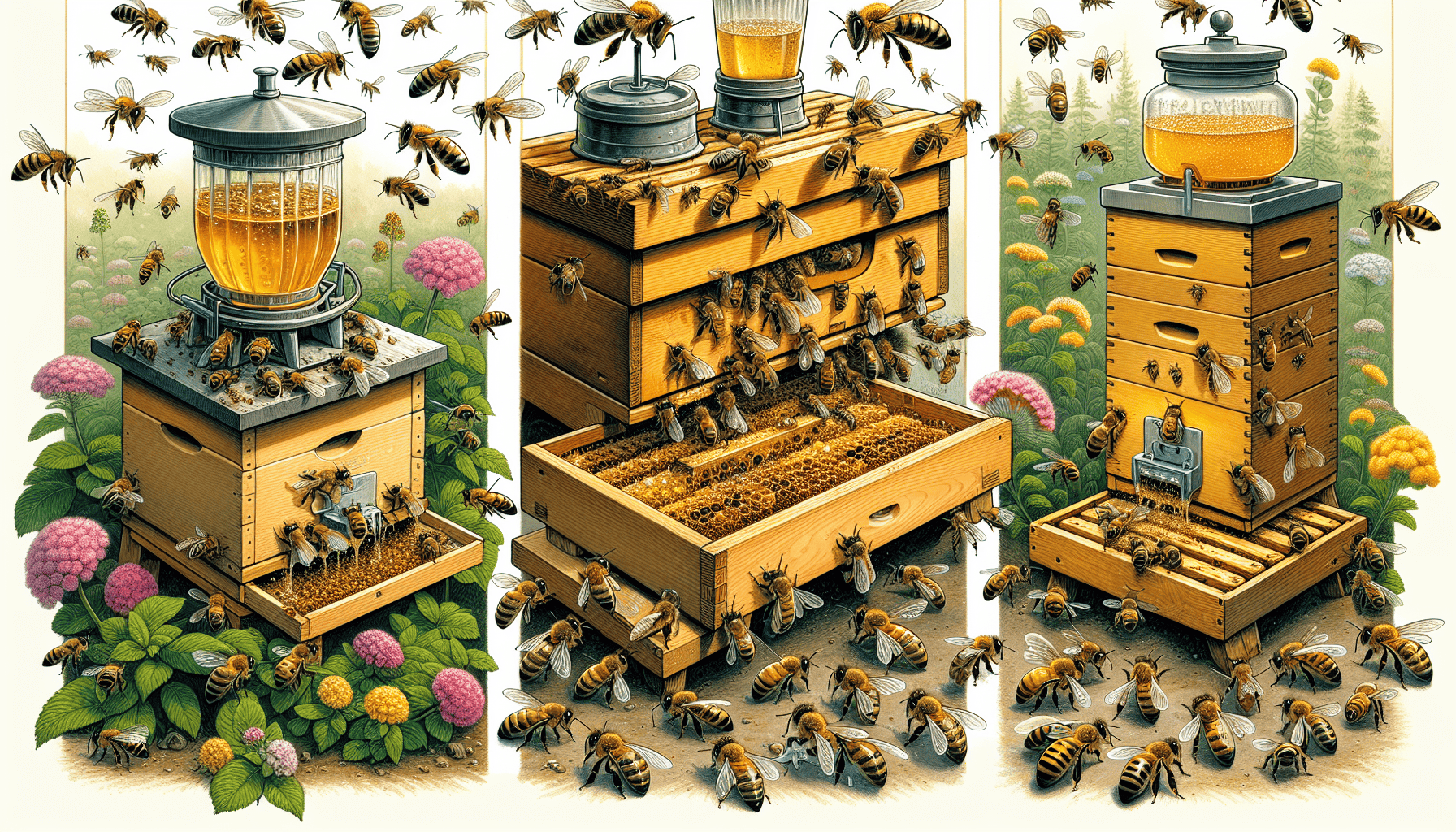
To successfully and safely provide feed to bees, it’s essential to use the correct methods and tools. Various syrup feeder options are available for beekeepers, which include:
Plastic feeder pails
Hive top feeders
Division board feeders
Utilizing empty drawn comb
Plastic bag feeders
Boardman feeders
Each type of these feeding systems has its own set of benefits and potential drawbacks. The decision on which one to employ should be based on the specific requirements you have as a beekeeper and the current status of your hives.
Employing appropriate feeding apparatus is crucial in averting common problems such as robbing by other bees, bees drowning in syrup, or contamination issues. Below we discuss some successful techniques for feeding bees along with their associated equipment.
Division Board Feeder
A division board feeder, tailored to fit seamlessly inside the hive, provides a substantial reservoir of syrup for the bees. This sturdy-edged frame-like container is strategically installed within the hive to provide convenient access and prevent starvation, an essential consideration during winter months.
It’s important to be aware that there’s a considerable risk of drowning associated with these feeders if they are not equipped with appropriate precautions. To safeguard against this hazard, make sure your division board feeder includes floats or some form of anti-drowning mechanism to protect the bees.
Hive Top Feeder
Beekeepers can effortlessly monitor and replenish syrup levels using hive top feeders, which are situated directly atop the hive. Their design facilitates convenient access, especially when frequent refilling is necessary. If safety elements aren’t incorporated into the feeder’s design, bees might drown.
To ensure safe use of these feeders during spring feeding—a critical time for a steady food supply due to brood production—there should be small holes in their lids that mitigate overflow risks and help prevent drowning of bees. This setup aids beekeepers in supporting their hives efficiently throughout this season where food is crucial for nurturing new brood.
Boardman Feeder
The Boardman feeder is a type of external feeding apparatus that utilizes an overturned mason jar with a punctured metallic lid. It serves as a handy tool for offering additional food to bees, eliminating the need for regular hive intrusion. Inadequate supervision of Boardman feeders can entice pests and provoke thieving actions within bee populations.
Employing Boardman feeders judiciously while vigilantly observing any pest attraction can minimize incidents of robbing by bees. This particular feeder becomes especially beneficial during times when bees require an immediate and easily reachable source of sustenance, such as in urgent feeding situations.
Seasonal Feeding Strategies

Adapting feeding strategies for honey bees is crucial as the seasons change to maintain their health and productivity. Keep an eye on flowering plants around the hive in order to gauge seasonal changes in feeding requirements. Inspect the honey reserves within the hive to assess if there’s a necessity for supplementary feed.
As each season brings distinct challenges and advantages when it comes to nourishing bees, it’s essential that beekeepers adjust their practices accordingly. Doing so will help preserve colony well-being and guarantee an uninterrupted supply of food resources necessary for sustaining honey bee populations.
Winter Feeding
Throughout the winter months, honey bees need carbohydrates to maintain energy levels and stay alive. It is essential for a normal bee colony to have access to 15-20 kilograms of food during this period for sustenance. Given that bees are unable to ingest cold syrup when temperatures drop, it becomes critical to feed them solid sugar substances like fondant.
To help your bee colonies make it through the harsh winter conditions, they should be stocked with approximately 90 pounds of honey. A thriving hive usually shows signs of heightened activity in its bees, whereas sluggish behavior can indicate a lack of sufficient nourishment. Adequate feeding during winter is imperative for ensuring the survival of your bees until spring.
Spring Feeding
During the spring period, raising of the brood is vital for ensuring a robust bee population capable of efficiently collecting nectar, constructing comb structures, and accumulating honey reserves. Supplying colonies with white sugar sustenance can be crucial to ward off starvation within honey bee communities when there are lapses in natural nectar sources—this is particularly important surrounding the vicinity of the brood nest.
For optimal results in feeding honey bees during springtime, adhering to a sugar solution mix at a 1:1 ratio has been advocated. Keeping an eye on levels of activity amongst the bees can provide insights into their access to food. Diminished action could highlight an urgency for supplementary feeding. Proper nourishment through strategic spring feedings lays the groundwork for preparing honey bee colonies to thrive during periods where they’re most active.
Fall Feeding
Ensuring that honey bees possess sufficient honey reserves to endure the winter period is essential, and this often involves feeding them sugar syrup in the fall. This practice helps increase their honey stores as sources of nectar become scarce.
To prepare for winter effectively and diminish the dangers of robbing and starvation, it’s important to provide sugar syrup feedings during daytime hours when there’s a shortage of natural nectar available. This strategic feeding strengthens bees ahead of the cold season.
Monitoring and Adjusting Feeding Practices
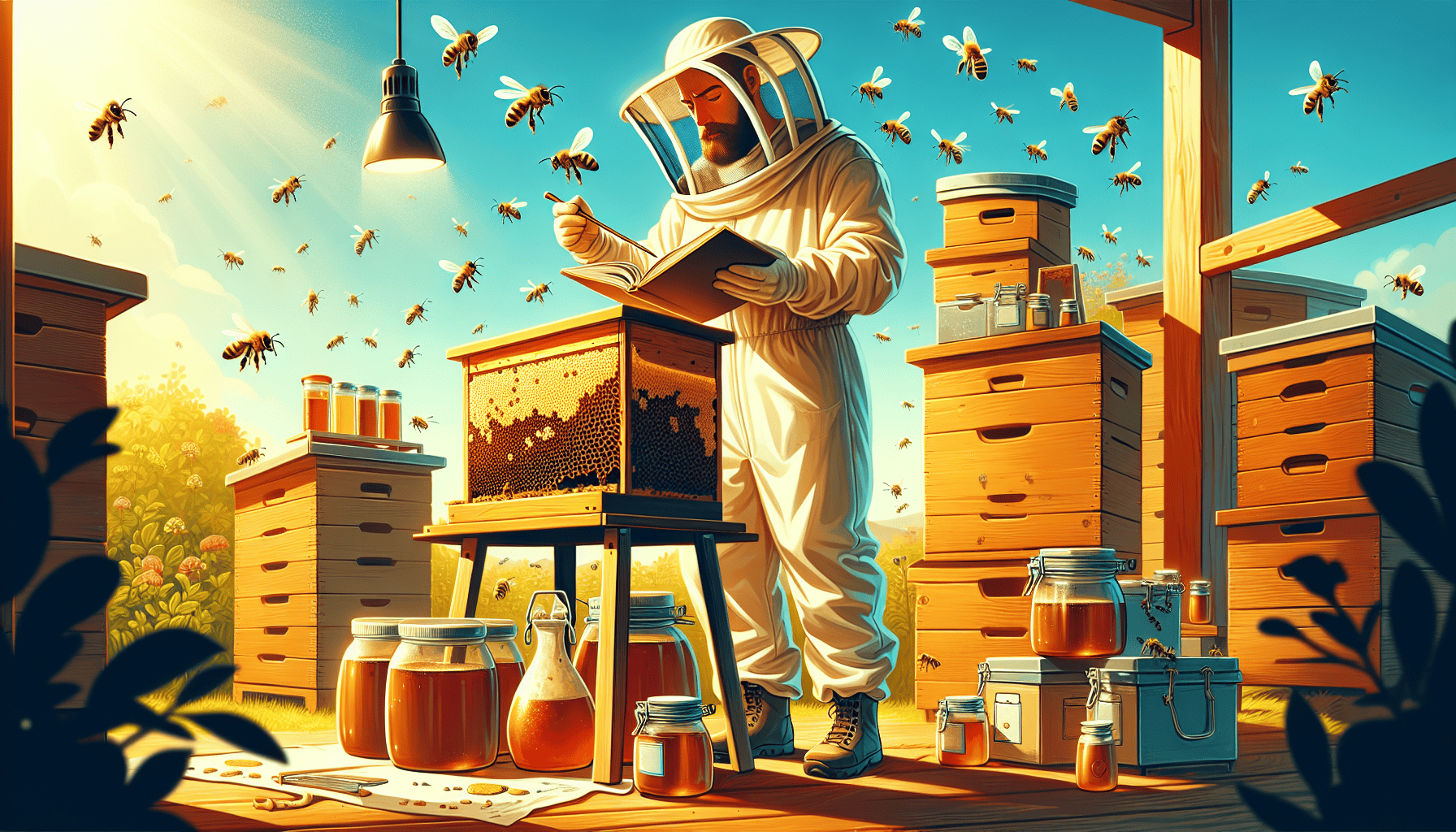
To sustain the health and productivity of honey bee colonies, it is crucial to vigilantly monitor and modify feeding practices. Adapting these strategies according to seasonal fluctuations is key in preserving colony well-being. Feeding in early spring is particularly important as it averts potential starvation during the onset of brood rearing.
By closely observing how much syrup the bees consume, one can ascertain the correct quantity needed for effective feed. Continual assessments of colony wellness are essential for fine-tuning feeding practices, thereby guaranteeing that nutrients are provided throughout all seasons.
Assessing Hive Weight
During the autumn season, it is crucial for beekeepers to keep an eye on the weight of their colonies to confirm there are ample honey reserves for enduring the winter months. By lifting a hive, one can evaluate its total weight and ascertain whether supplemental feeding might be required for the colony’s survival.
Utilizing a hive scale provides accurate measurements of any fluctuations in weight, which supports informed decisions about feeding. These evaluation techniques enable beekeepers to determine if they need to provide extra food by considering the overall heft of the hive.
Observing Bee Behavior
Monitoring the activity of bees is crucial for gaining insights into the performance and well-being of their hives. By examining bee behavior at prime foraging periods, one can evaluate how effectively they are exploiting food sources. Vigorous bee activity reflects robust colonies, whereas diminished movement might suggest distress within the hive or a lack of food.
Conducting frequent evaluations of bee movements helps to avoid excessive feeding and simultaneously guarantees that the hives receive sufficient nutrition.
Adjusting Feed Quantities
Regular monitoring of the combs is essential to gauge the amount of syrup stored, as too much feeding can result in contamination that negatively impacts hive well-being. The optimal moisture level for matured syrup should be approximately 18%.
Based on these inspections, adjust how much syrup you feed in order to provide adequate nutrition without risking contamination.
Preventing Common Feeding Issues
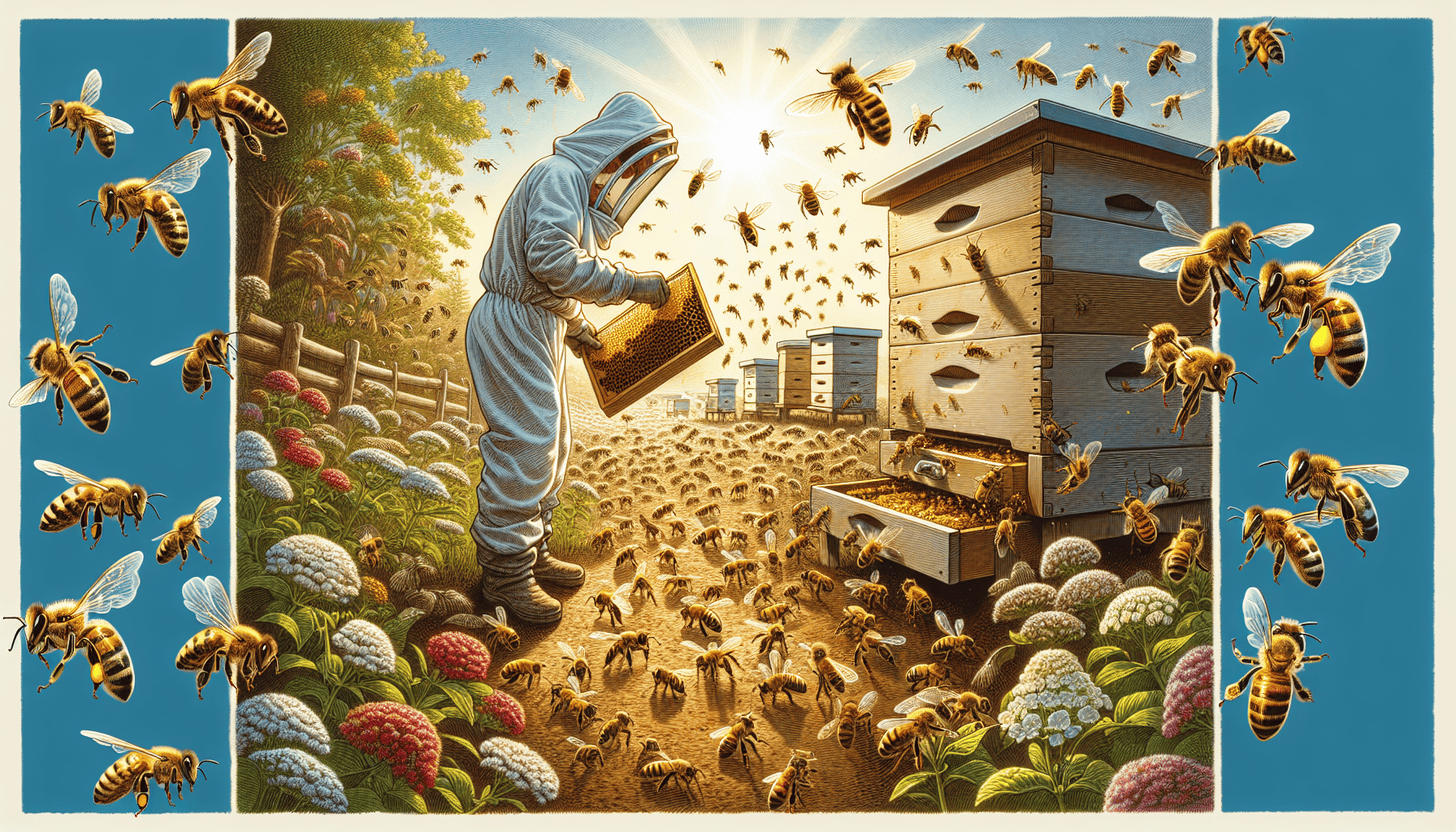
It is essential to avert typical feeding problems for the well-being of honey bee colonies. Utilizing empty drawn combs from healthy colonies when feeding can reduce the likelihood of brood diseases. Making sure that these combs come from a robust colony lessens disease risk.
Securing appropriate storage and implementing measures against disease are critical to preserving the integrity and safety of feed for bees. Below, we outline several prevalent issues related to feeding and strategies for their prevention.
Avoiding Robbing
Introduce honey into the hive to deter robbing from neighboring colonies. Feeding bees with sugar syrup or dry sugar should ideally be done towards evening, as this reduces heightened activity around the hive. Avoid open feeding of either syrup or dry sugar since it may draw in bees from nearby hives and instigate robbing.
Opt for fondant rather than syrup when possible, as this can lessen the chance of thievery by wasps or bees from adjacent hives.
Minimizing Disease Spread
To avert the spread of diseases, it is crucial to utilize feed that is free from contaminants and ensure all tools are sanitized. Infections can be brought into your hive through honey obtained from sources that have not been properly vetted. The upkeep of hygienic conditions in managing your hive necessitates consistent sterilization of both tools and containers.
It’s important to procure your feed only from suppliers who have established a reputation for providing products uncontaminated by diseases or impurities. This measure is vital for maintaining the health and safety of your hives.
Ensuring Proper Feed Storage
Keeping feed in containers that are sealed against air safeguards it from both moisture and infestations, preserving its quality. It is crucial to store the components of feed in such a way as to block out moisture and avoid any contamination.
Maintaining appropriate storage conditions for feed ensures its safety and nutritional value by reducing the chances of spoilage or contaminant exposure.
Summary
Feeding honey bees is a vital aspect of beekeeping that requires careful consideration and planning. From choosing the right feed to employing effective feeding techniques and adjusting practices based on seasonal changes, every step plays a crucial role in maintaining hive health.
Regular monitoring and adjustments ensure that your bees receive the necessary nutrients throughout the year, preventing starvation and promoting colony growth. By following the best practices discussed in this guide, beekeepers can ensure their hives are healthy, productive, and thriving.
Remember, the well-being of your honey bees is in your hands. Implement these strategies, and watch your colonies flourish, contributing to a healthier ecosystem and a bountiful honey harvest.
Frequently Asked Questions
What is the best type of feed for honey bees during winter?
Fondant is the optimal feed for honey bees in winter since it delivers essential carbohydrates that give them energy during times when liquid syrup cannot be used due to cold conditions.
Ensuring your bees are provided with this will bolster their chances of having sufficient nourishment to make it through the chilly winter months.
How often should I check my hives for feed requirements?
It is crucial to keep a consistent check on your bee hives, gauging the quantity of honey reserves by their heft during autumn and keeping an eye on the activity patterns of bees in spring and summer to determine their nutritional requirements.
Adopting this strategy guarantees that your bees are sufficiently supplied with necessary provisions across different seasons.
How can I prevent robbing when feeding bees?
To prevent robbing when feeding bees, place sugar syrup or dry sugar inside the hive towards evening to reduce activity, and consider using fondant instead of syrup to deter neighboring hives and wasps.
What is the ideal sugar syrup ratio for spring feeding?
During the vital period of spring feeding, providing honey bees with a sugar syrup made at a 1:1 ratio offers them necessary sustenance.
How do I ensure my feeding equipment is safe and clean?
Regularly sterilizing all tools and containers used for hive management is crucial to maintain safe and clean feeding equipment. Sourcing feed from trusted suppliers is essential to prevent diseases and contaminants in the hive.

